Investment Strategy
Ohio’s Cleveland Foundation Centennial Lake Link Trail | Photo by Jason Cohn
RTC’s TrailNation™ Playbook curates case studies, best practices and tools to accelerate trail network development nationwide. Explore each section for lessons learned that can support trail planners, municipalities, states and regions working to advance trail network projects.
Project Vision | Coalition Building | Mapping and Analytics | Gap-Filling Strategy | Investment Strategy | Engagement

Funding trails and greenways as part of a regional trail and active transportation network takes a bit of ingenuity and plenty of research. Developing and implementing a strategy that considers a variety of sources—including state, local, federal and private dollars—is essential to accelerating network completion. That strategy should consider all the traditional funding mechanisms available to you, as well as other creative methods such as cross-sector partnerships and grant-making, to fund or finance the full life cycle of the trail. For many reasons, some gaps in the trail network may be easier to fund than others. A comprehensive investment strategy will ensure that all the resources available are being brought to bear to develop and maintain the trail network.
Understanding the Cost of the Network
Understanding the cost of building and maintaining a trail network is a crucial first step to developing a comprehensive funding strategy.
The Capital Trails Coalition, a Rails-to-Trails Conservancy (RTC) TrailNationTM project, generated a cost estimate for the network to better understand the project’s total costs and direct its funding advocacy. Determining the cost estimate for the network required in-depth research. Representatives from the Capital Trails Coalition held meetings with government agency staff members in each of the jurisdictions across Washington, D.C., Maryland and Virginia to gather actual costs from recently completed trail projects as well as locally known project cost estimates. Where estimated costs were not known locally, the coalition aggregated regional data, including capital improvement plans and federal funding programs, to generate per-mile cost estimates. The coalition created cost estimates for project categories based on location (urban, suburban or rural), perceived difficulty of construction (easier, moderate or difficult) and type(s) of infrastructure being developed (e.g., major bridge or tunnel projects requiring extensive construction and engineering). The estimates did not include costs for potential right-of-way acquisition, as these will vary by project.
These cost estimates support the Capital Trails Coalition by:
- Serving as a resource for trail managers to better predict the cost of design and construction associated with in-network trail projects
- Documenting actual project costs and estimates that can be used by local planners and trail advocates as cost comparisons to make the case for funding trail projects
- Monitoring funding for the trail network and pushing for more funding to be included in municipal, county, state and federal budgets
- Driving public awareness and attention to the project to rally support
Demonstrating the value of trails across a region is an important component of making the case to potential investors. In addition, many trails benefit from economic impact studies and other materials that quantify the return on investment. While the total cost of the project may seem significant at a glance, trail network projects often cost far less than other road or highway projects and can deliver significant return on investment. Outlining the economic and social impact of a trail network project can crystalize that return on investment. For example, a $1.09 billion investment in building out the Capital Trails Network would yield $2.05 billion from construction over 25 years, supporting 16,100 jobs. Annually, the same network would contribute $941 million to the local economy, supporting 8,200 jobs. In Baltimore, an economic impact study of the Baltimore Greenway Trails Network, another of RTC’s TrailNation projects, found that the 35-mile citywide trail system would generate up to $113 million annually in local business activity near the trail. The trail network’s construction has the potential to generate up to $48 million in gross economic output.
Identifying Funding Sources
The investment strategy developed for a trail network should consider a plethora of available funding mechanisms, including government funding sources, grants, partnerships and other creative methods. Combined, these sources should fund or finance the full life cycle of the trail, from development to maintenance, to ensure that the network remains usable and in a good state of repair for years to come. These streams of funding may vary in accessibility, based on the size, shape and geographic location of the project.
In considering potential funding sources, it is important to recognize how each aligns with the various phases of the project. For example, land acquisition is often funded by state land policies or private, in-kind or other local deals. Planning and design, as well as construction, are often funded by state and federal funds, leveraging local investments, in-kind contributions and other private grants for match dollars. Maintenance is primarily funded by the federal Recreational Trails Program, though there are also some state and local resources to support the ongoing health of a trail network’s facilities.
Keep in mind, too, that the different components of a trail network could be in various phases of development at any given time. On one corridor, funding could be focused on land acquisition, while on another, funding is needed for maintenance of a network spine trail. The funding process is never linear.
The Role of State Land Policies in the Acquisition Phase
State land policies often come into play when acquiring land for trail network development, including big land-conservation programs like Florida Forever or the Knowles-Nelson Stewardship Program in Wisconsin. The Knowles-Nelson Stewardship Program was essential in acquiring a key segment of the Route of the Badger, an RTC TrailNation project. When the 11-mile Canadian Pacific Railway corridor in Racine County became available for trail conversion, $1 million in funding from the stewardship program, paired with $500,000 in funding from the county, was used to acquire the land.
RELATED: RACINE COUNTY RAILS TO TRAILS PROJECT RECEIVES FUNDING BOOST
Federal Funding Sources
Trails and trail networks are eligible for a collection of federal funding sources. Two legacy programs—Transportation Alternatives (TA) and the Recreational Trails Program (RTP)—are the largest funding sources for trails, walking and biking and are responsible for helping to build the nation’s current multiuse trails, protected bike lanes and sidewalks. In addition, trails and trail networks are eligible for funding under other federal programs that are competitive against local and state priorities.
There are pros and cons to utilizing federal funding for a trail network. In the pro column:
- Federal funding often has large amounts of money available.
- These programs tend to complement state and local sources.
- Bicycle and pedestrian projects can be competitive when paired with local funding support.
In the con column:
- Many of these projects are competing against a slate of worthy projects nationwide.
- Bureaucracy associated with these programs can be difficult to navigate.
- “Federalized” programs carry an additional regulatory burden.
Regardless of the pros and cons, federal funding is an important consideration when framing out a trail network investment strategy.
Many trail networks have received funding from federal sources. For example, the Jones Falls Trail, an important segment of the Baltimore Greenway Trails Network, was granted four TA program grants between 2004 and 2015 totaling $5.9 million in federal investments. In the Route of the Badger footprint in Southeast Wisconsin, several segments of the Oak Leaf Trail have received RTP funds: Lake Loop and Warnimont Park. Currently, the competitive, multimodal Rebuilding American Infrastructure with Sustainability and Equity (RAISE) program (previously known as TIGER, then BUILD), provides a unique opportunity to secure significant investment in trail network development and connectivity. The Circuit Trails, one of RTC’s TrailNation projects, has secured RAISE funding previously, as has Cleveland Metroparks for trail segments that are part of the Industrial Heartland Trails Coalition, an RTC TrailNation project with a vision of a 1,500-miles-plus multiuse trail network connecting Pennsylvania, West Virginia, Ohio and upstate New York.
When the Infrastructure Investment and Jobs Act (IIJA) (H.R.3684), otherwise known as the Bipartisan Infrastructure Law, passed in November 2021, it included reauthorization of the nation’s federal surface transportation bill, which provides the largest source of public funding for trails, walking and biking. The new law includes some changes to familiar programs and adds new funding opportunities for trails and active transportation programs.
RTC is maintaining resources to support trail managers, municipalities, states and advocates in pursuing these federal programs for trail and active transportation funding.
Dedicated Active Transportation Funding Sources
These programs provide federal funding that is dedicated to trails, walking and biking.
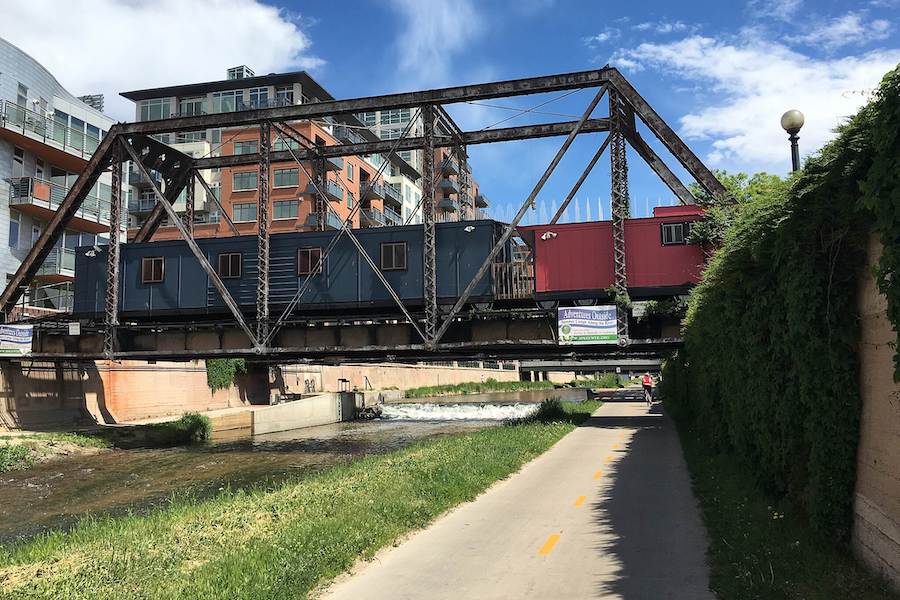
Transportation Alternatives
The nation’s largest dedicated federal funding source for trails and active transportation. New guidance instructs state DOTs on how to implement the TA funding in alignment with policy changes included in the Bipartisan Infrastructure Law.
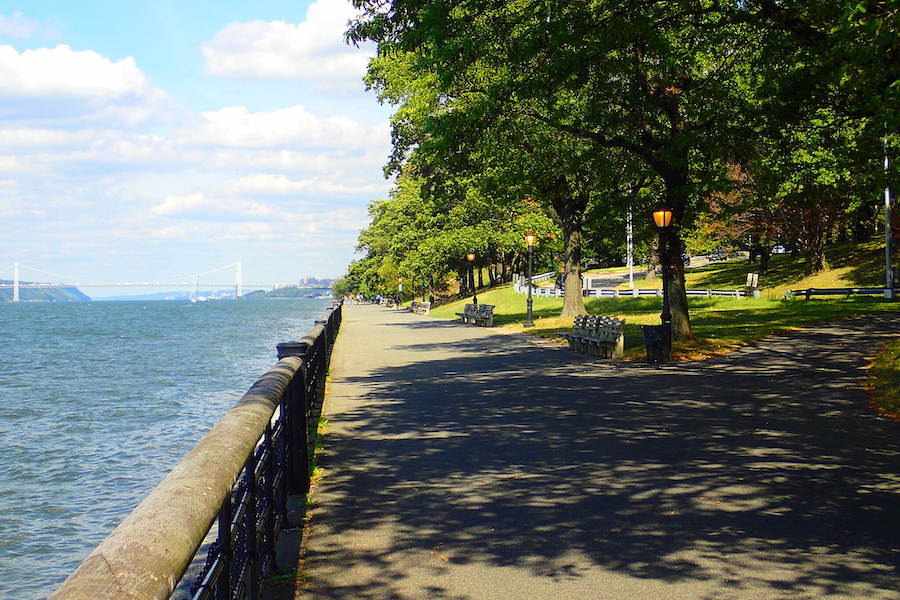
Recreational Trails Program
Funded by gas taxes paid by off-road vehicles, the Recreational Trails Program (RTP) is dedicated to the construction, restoration and maintenance of nonmotorized and motorized recreational trails (paved and unpaved) and trail-related facilities.
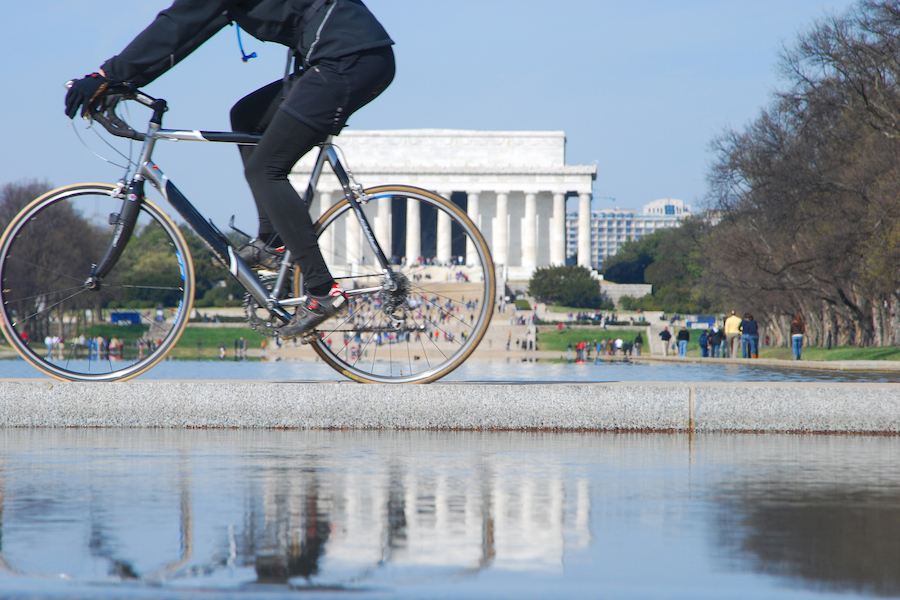
Active Transportation Infrastructure Investment Program
This new program, administered by the U.S. Department of Transportation (USDOT), establishes a competitive grant program focused on connecting active transportation infrastructure.
Eligible Funding Sources
Trails and active transportation projects are eligible for funding under these programs that are competitive against other local and state priorities.
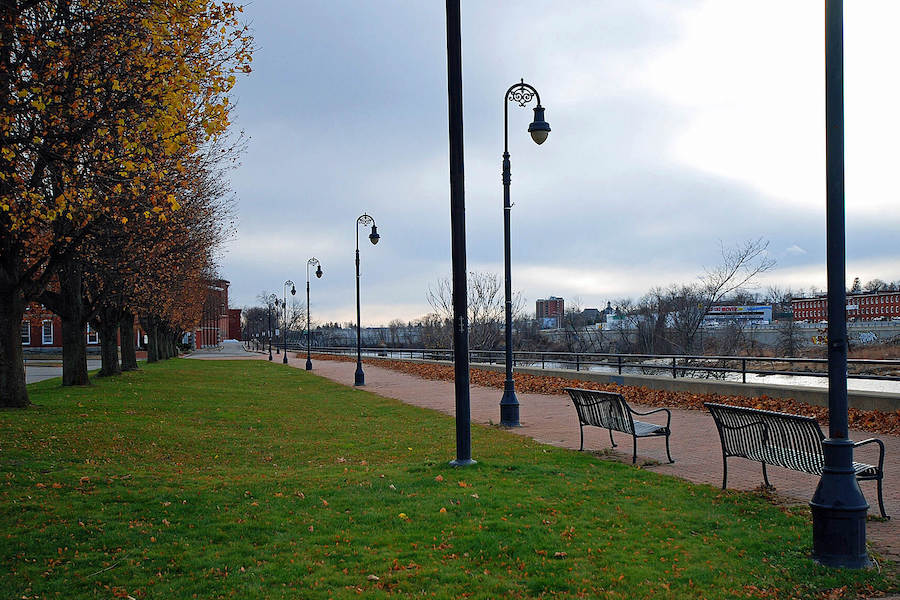
Rebuilding American Infrastructure and Sustainability Equity (RAISE) Grants
These competitive grants are administered by the U.S. Department of Transportation and serve to achieve national objectives by investing in multimodal and multijurisdictional projects.
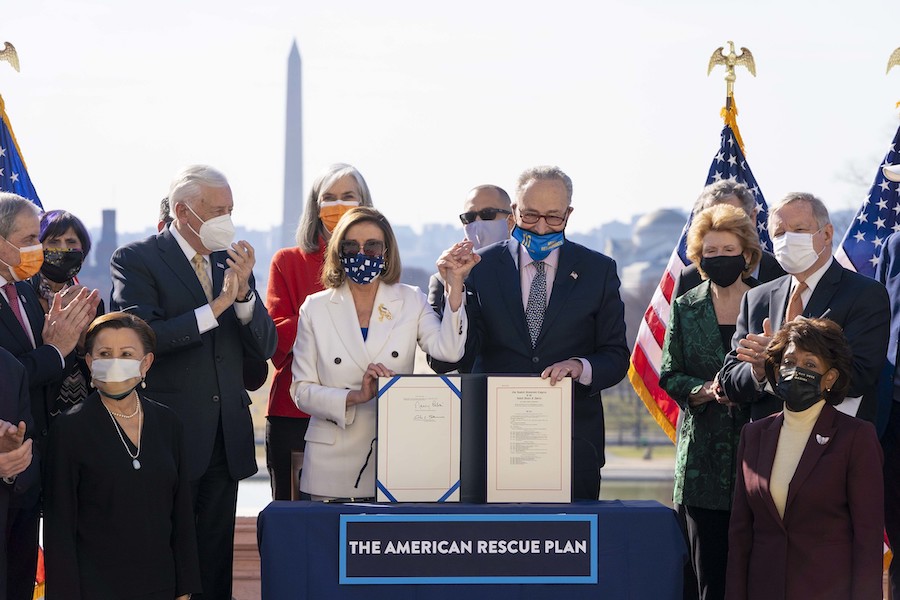
American Rescue Plan/Coronavirus State and Local Fiscal Recovery Funds
These funds are intended to provide relief and assistance to local, state and tribal governments in response to the COVID-19 pandemic.
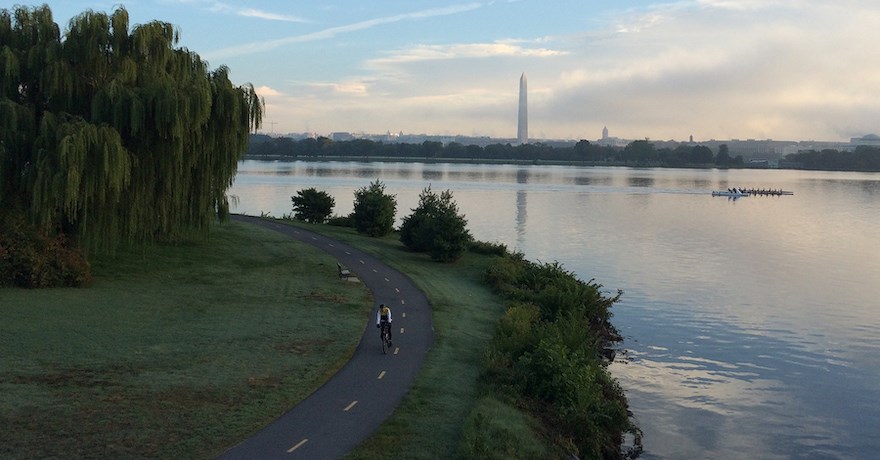
Earmarks
These funds support local priorities and are requested by members of Congress.

Transportation Alternatives Data Exchange
Rails-to-Trails Conservancy’s (RTC) Transportation Alternatives Data Exchange (TrADE) is the nation’s go-to transportation funding data source for trails and active transportation, tracking TA spending for tens of thousands of projects.
State Funding Sources
Many states complement federal funding for active transportation and trails with state-generated funds appropriated by state legislatures. There are many types of state funding programs and many, many ways that states have created these funds, including statewide and project-specific, “earmarked” funding. Funding for trails and active transportation may be included as part of a broader budget or funding package, or “dedicated” to trails and active transportation. It may be one-time funding, for a finite number of years, or “recurring” funding. Regardless of the type of funding, it is invaluable to have the vision or plan for a trail network included in publicly adopted planning documents (e.g., transportation plan, economic development plan). That way, when funding decisions are made, the trail network has already been identified as a priority. In other words, the due diligence of getting buy-in from decision-makers and the public has already happened.
In planning a state funding strategy for your trail network, make sure you first fully understand the scope of funding sources available.
Dedicated active transportation funds: State legislatures can establish one-time or recurring funding pots for trails and other active transportation.
Consolidated active transportation programs: To streamline the application process for state and federal funding sources, several states (namely California and Minnesota) have created consolidated Active Transportation Program (ATP) funding.
Add-ons to larger funding: Trail funding may be included as part of a larger appropriation or bond for climate change, outdoor recreation, state parks, land conservation, etc. Bicycle, pedestrian and trail funding may be included as part of an increase in overall transportation funding, such as a gas tax or transit funding. Some states have constitutional or statutory limitations on using gas taxes for non-automobile purposes, or may limit the use of funds to on-street improvements such as adding a bike lane to a road already undergoing upgrades.
Earmarks: Some states allow legislative funding of specific projects, which may or may not be called “earmarks.” These are distinct from federal earmarks.
Unallocated funds: Trails may be eligible for funding via legislative appropriations that are not specifically allocated, or that are part of a broader funding pot like “outdoor recreation.”
Agency funding: The legislature may designate more funds to state agencies for trail- or multi-modal-specific staff positions and projects.
Equitable Investment Strategies
In California, the Active Transportation Program (otherwise known as ATP) offers technical assistance to ensure that funds are reaching under-resourced communities with a strong track record of success. The program is focused on low-resourced communities that previously have had little success in securing funding for active transportation projects. For each funding cycle, the California Department of Transportation hires a team of nonprofits and consultants to provide in-depth assistance to disadvantaged communities as defined by the state. For three of the past four cycles, RTC and the nonprofit CivicWell (formerly the Local Government Commission) have served as technical assistance providers. Technical assistance may include project scoping, community engagement support, workshops on key topics and application development.
Advocating for State Funding
Given the diverse nature of states and their legislatures—including size, region and political characteristics—a one-size-fits-all approach to advocacy is rarely effective. It is important to understand the nuances of the states you are working within to design the most appropriate and outcome-oriented advocacy strategy. Some examples of localized advocacy strategies include filing a bill, engaging grassroots support, providing legislative testimony, hosting advocacy days, hiring professional lobbyists and hosting rallies, among others.
States across the country have replicated successful advocacy tactics specific to trail funding. Two examples include:
In Ohio, Indiana, Wisconsin and North Carolina, legislative caucuses have elevated the cause of trails among their legislatures. A caucus is a group of elected officials within a body that is committed to a certain cause (e.g., trails, bicycles, outdoor recreation, transit, etc.) and can serve as an ongoing source of support for the issue and build a foundation for dedicated funding over time. The Ohio Legislative Trails Caucus, for example, constitutes about 40% of all members of that state’s legislature and is equally divided between Republicans and Democrats.
RELATED: OHIO LEGISLATIVE TRAILS CAUCUS OVERVIEW
A statewide master plan (e.g., trail, bicycle, tourism, etc.) can be a tool to build political support for trail funding by prioritizing projects and demonstrating to legislators how projects in their respective districts would benefit from new funding. State agencies can create and fund master plans using existing capacity or a fairly modest legislative appropriation.
Private Funding Sources
A diversified trail network investment strategy should include private investment. Private funding can be essential in land acquisition, capacity building, programming and trail network activation. Often, private funding can make public funding more accessible by acting as a local funding match needed for some state and federal programs or by helping trail developers meet public grant requirements. Sometimes, the most important role of private investment is in bringing visibility to the project and demonstrating the depth of support for it, which can help unlock other private and public funds.
Often, philanthropic sources like local, national or regional foundations and endowments can be meaningful funders of trail networks, especially when their institutional goals align with the benefits outlined in the trail network’s vision. In addition, individual donors can be inspired by the potential of a trail network—either because of their personal passion for trails/walking and biking/land conservation/the climate, or because they believe that the trail system can improve economy and quality of life in the region it serves.
A Trail to Quality of Life
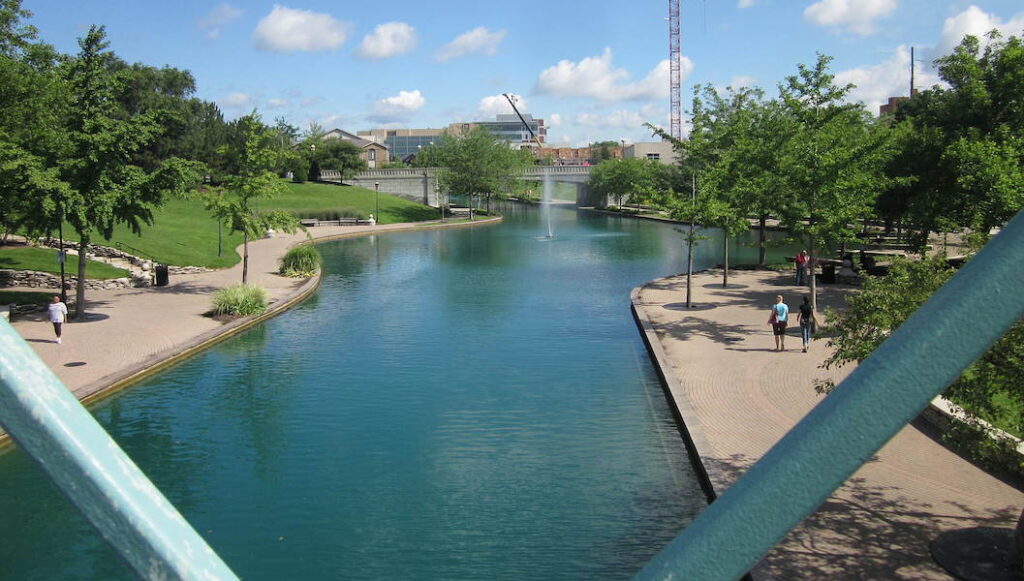
The Indianapolis Cultural Trail connects six downtown neighborhoods and numerous arts, heritage, sports and entertainment institutions. It seamlessly connects across 8 miles and between neighborhoods, cultural districts and entertainment amenities while serving as the downtown hub for central Indiana’s vast greenway system.
Retrofitting a NASCAR town isn’t easy; the $63 million Cultural Trail was funded through the federal Transportation Enhancements and TIGER programs, as well as millions in private philanthropy and tens of millions in private investment. The Cultural Trail is known by many as a legacy of private funders Gene and Marilyn Glick, who generously committed $15 million as a lead gift for the project.
Read more about the quality-of-life plan and investment strategy that accelerated the Cultural Trail.
100 Years of Impact in Greater Cleveland
The Cleveland Foundation board of directors awarded a centennial legacy grant of $5 million to the Trust for Public Land for the Lake Link Trail project (subsequently renamed the “Cleveland Foundation Centennial Trail”). The gift commemorates the foundation’s 100 years of impact in Greater Cleveland. When completed, the Cleveland Foundation Centennial Trail will connect with the Ohio & Erie Canal Towpath Trail at the southern end of the Scranton Peninsula. This investment pushed the momentum forward for the completion of the Wendy Park Bridge, a $6 million project connecting the Cleveland Foundation Centennial Trail over the river and multiple railroad tracks to Whiskey Island and the Lake Erie lakefront.
RELATED: NEW LAKE LINK TRAIL SEGMENT UNVEILS A WONDERLAND IN THE FLATS
From Brownfield to Connectivity Hub
The second stage of the Ohio & Erie Canal Towpath Trail Extension was privately funded by developer First Interstate Properties. The project is part of an ambitious and challenging brownfield redevelopment initiative that aims to bring national retail to the region. The developer spearheaded the $90 million Steelyard Commons shopping center, which opened in 2007. The Ohio & Erie Canal Towpath Trail Extension connects pedestrians to the shopping center, providing bicycle and pedestrian access to stores, restaurants and jobs.
Developing an Investment Strategy
Knowing the project cost and outlining the potential funding sources are pieces of the puzzle in defining a trail network investment strategy, but the strategy comes to life once tactics are identified that unlock resources and move trail network development forward. Here are some successful tactics that can kick-start a trail network investment strategy.
Build Relationships for Long-Term Success
Political cultivation is critical to unlocking resources and funding for a trail network. Staying engaged with mayors, local and regional partners, and congressional delegations, as well as maintaining frequent communication with government officials involved in the projects over the long term, is crucial to prepare for and be competitive in federal funding opportunities like earmarks, RAISE grants, etc. In addition, sustained and visible community support is key to building political will and securing funding for a trail network. Community support can make all the difference when it comes to determining which projects to pursue for one-off funding requests, elevating the stature of a project to elected officials and securing investment from private sources.
RTC’S TRAIL-BUILDING TOOLBOX: BUILDING RELATIONSHIPS WITH PUBLIC AGENCIES AND OFFICIALS
RTC’S TRAIL-BUILDING TOOLBOX: BUILDING COMMUNITY SUPPORT
Include Trail Networks in Local, Regional and State Trail and/or Transportation Plans
Inclusion in an STIP (Statewide Transportation Improvement Program) or TIP (Transportation Improvement Program) is key to ensuring relevant government agencies are aware of trail network projects that are eligible for prioritized funding. In addition, having trail network plans formally adopted at the state and regional levels is helpful in securing political will for the vision and ensuring the project is prioritized if new or rapid-response funding is made available, such as stimulus funds.
For example, the Capital Trails Coalition advocated for the Metropolitan Washington Council of Governments (MWCOG) to formally adopt the coalition’s vision for a regional 800-miles-plus trail network. Ultimately, MWCOG adopted the coalition’s vision, making the coalition more competitive for receiving regional, state and federal funds.
Leverage Trail Data and Storytelling
Trail use documentation from counters, etc., can help reinforce the importance of trails and show regional impacts of investment. These statistics can be even more powerful when paired with the personal stories and experiences of constituents. It is also critical to prioritize—and demonstrate—the impacts of a trail network on equity metrics to understand how new access to walking and biking routes can benefit under-resourced and underrepresented communities.
Data and storytelling are also critically important in communicating the return on investment beyond walking and biking. Consider measuring the economic benefits of the trail network, as well as other quantifiable outcomes that are important to the communities you serve and the decision-makers you seek to influence, such as carbon emissions avoided, health care costs avoided, vehicle trips avoided, access to transit, etc.
RTC’S TRAIL-BUILDING TOOLBOX: TRAIL USER SURVEYS AND COUNTING
RTC’S TRAIL-BUILDING TOOLBOX: LEVERAGING DATA TO ADVANCE EQUITABLE PLANNING AND DEVELOPMENT
Create Opportunities for Networkwide Collaboration
In the case of projects with a scope stretching across jurisdictional lines, the trail network coalition may be the only group who sees the full picture. In these situations, coalitions need to consistently educate decision-makers about the scale and impact of the project.
Coalitions may need to work across regions and projects to help active transportation projects scale and meet the minimum funding requests to qualify for some federal opportunities (especially competitive grant programs like RAISE). This can be especially important for smaller communities. Metropolitan planning organizations (MPOs) can be great resources for this, as they have existing relationships with the appropriate staff and agencies. Conversely, MPOs may need your support, as the trail network’s leaders/advocates, to work across municipal borders. One example can be seen within the Circuit Trails footprint in greater Philadelphia, where the regional MPO, the Delaware Valley Regional Planning Commission, is a leader supporting advancement of the trail network.
RTC’S TRAIL-BUILDING TOOLBOX: WORKING WITH METROPOLITAN PLANNING ORGANIZATIONS
Cultivate and Maintain Relationships
Consistent, strategic collaboration and partnerships are essential to establishing and implementing an effective investment strategy. Relationships with key players and awareness of your project need to be established before funding opportunities emerge. These sustained relationships can generate strong demonstrations of support and keep federal representatives informed about the trail network.
Talk with your elected officials, MPO/council of governments and area planners as frequently as possible about the trail network (the benefits, the need, the support that already exists, etc.). This way, when an opportunity for funding arrives, key decision-makers will already be familiar with the project and supporters of it, increasing the likelihood that they will find ways to make it eligible for public investment. Attend lobby days and invite officials and their staff to advocacy or trail planning events. Make sure they are on your contact list and that they receive updates about the trail network. Use your network of support for the trail to determine if there are existing relationships that can be built upon.
Keep plans—in all stages of development—top of mind. Depending on the opportunity, you could leverage projects in varying stages to illustrate their long-term impact, scale and eligibility for funding.
Consistently showcase grassroots support and public examples of support that exist for projects, and share this information directly in meetings with members of Congress.
Be aware of capacity challenges within organizations and local communities to apply for grants, as well as among departments of transportation to deploy projects. This can be a barrier preventing some from accessing federal funding sources.
Integrating Concepts Across the TrailNation Playbook
Project Vision | Coalition Building | Mapping and Analytics | Gap-Filling Strategy | Investment Strategy | Engagement
Each element of the playbook to build trail networks is integrated. While the process is not linear, each aspect plays an important role. When developing your investment strategy, consider these points.
- The trail network vision is a powerful tool in generating the political will, visibility and momentum needed to drive investment.
- The trail network coalition is a resource in developing the investment strategy and cultivating relationships to bring that strategy to life. Consider who has strong relationships that can be built upon to secure new investments.
- The mapping and analysis of the trail network provides the tangible conceptualization of the trail network that is necessary for its inclusion in master plans and other programs that improve project eligibility for public funding.
- The gap-filling process provides the detail about project priorities and funding needs that can be helpful in identifying creative funding sources. For example, does a specific segment qualify for a program designed to protect watersheds, or a program to enhance transit connectivity? The whole trail network may not be eligible, but that does not necessarily eliminate funding opportunities for key gaps along the route.
- Maintaining engagement that generates grassroots support, public enthusiasm and long-term relationships with decision-makers and funders is essential to securing the funding needed to accelerate trail network development.
Resources
RTC’s resources and analysis on federal funding
RTC’s resources on state funding